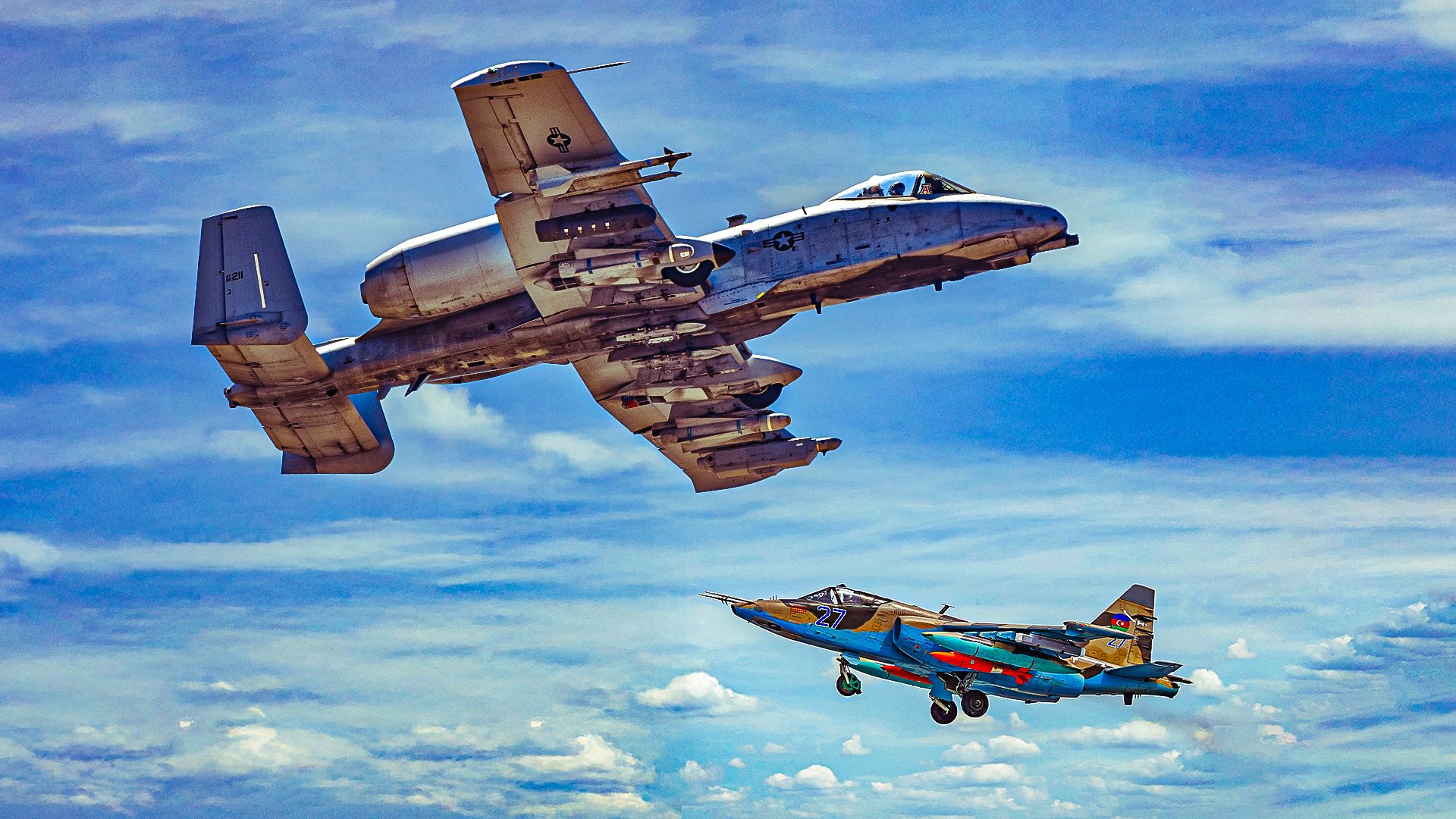The A-10 Thunderbolt II, commonly known as the Warthog, and the Sukhoi Su-25 Frogfoot are two of the most iconic close air support (CAS) aircraft in military aviation. Despite both serving similar roles, they exhibit significant differences in size, performance, and operational capabilities.
Both aircraft are vital in their respective air forces, with the A-10 being operated by the United States Air Force (USAF) and the Su-25 by the Russian Air and Space Force (RuASF). A direct comparison reveals that the A-10 is larger, boasting a wingspan of 57 ft, 6 in (17.42 meters) compared to the Su-25’s 47 ft, 1 in (14.36 m). The A-10 also has a greater maximum takeoff weight, reaching 51,000 lbs (22,950 kilograms), while the Su-25 maxes out at 38,800 lbs (17,600 kg).
Performance and Armament
The A-10’s payload capacity surpasses that of the Su-25, allowing it to carry up to 16,000 lbs (7,200 kilograms) of mixed ordnance. It is renowned for its powerful 30mm GAU-8/A Gatling gun, designed to engage armored targets effectively. In contrast, the Su-25 features a 30mm Gryazev-Shipunov GSh-30-2 autocannon and can deploy up to 9,700 lbs (4,400 kg) of munitions across its 11 external hardpoints.
Speed is another area where the Su-25 has an advantage. It can reach a peak speed of approximately 600 mph (970 km/h), outpacing the A-10’s maximum speed of 420 mph (675 km/h). However, the A-10 excels in endurance and operational radius, with a range of 800 miles (695 nautical miles) compared to the Su-25’s 405 nautical miles (466 miles, 740 km) when fully loaded.
Design and Tactical Roles
The tactical deployment of these aircraft reflects their design philosophies. The Su-25 is engineered for rapid deployment, capable of operating from shorter, less prepared airstrips, which allows it to be stationed closer to front lines. This proximity enables the Su-25 to respond quickly to calls for air support during combat operations. Its rugged design allows it to land and take off from a variety of surfaces and even utilize alternative fuel sources.
Conversely, the A-10 is built for resilience and prolonged engagement in the battlefield. The aircraft’s distinctive cockpit protection, known as a “bathtub” of armor, enhances crew survival rates during hostile operations. The A-10 typically operates from more established airfields and can loiter over the battlefield for extended periods, awaiting calls for assistance from troops on the ground.
The operational doctrines of the USAF and RuASF significantly influence how these aircraft are utilized. The A-10 often maintains a presence over engagement zones, ready to deliver firepower at a moment’s notice, while the Su-25 is frequently stationed near active conflict areas for rapid deployment.
The Future of Close Air Support
As military technology evolves, the future of CAS continues to shift. The USAF is increasingly investing in fifth-generation aircraft like the F-35A Lightning II and F-15EX Eagle II, which integrate stealth technology and advanced sensors for improved battlefield awareness. These aircraft are expected to redefine air support missions through enhanced survivability and strike capabilities.
Despite its age, the A-10 remains a beloved platform among pilots and ground crews alike. However, its retirement is imminent, with the USAF planning to phase out the entire A-10 fleet by 2029. The current operational landscape also poses challenges for the Su-25, particularly as sanctions impact Russia’s ability to maintain its fleet in light of ongoing conflicts, such as the situation in Ukraine.
With both aircraft witnessing significant advancements in their respective roles, the future of CAS may see a shift towards unmanned platforms. The ongoing evolution in military aviation suggests that while the A-10 and Su-25 may soon become relics of the past, their legacy in close air support will continue to influence the development of future aerial combat systems.
